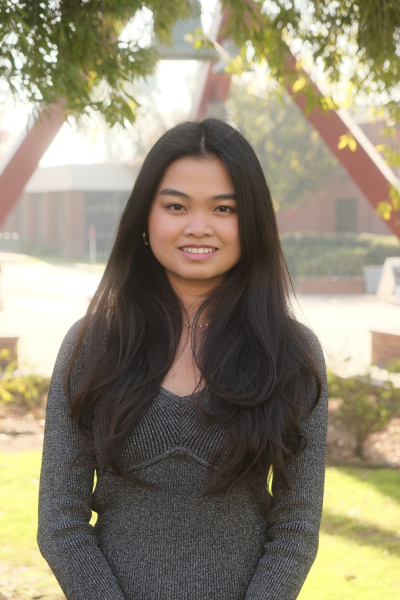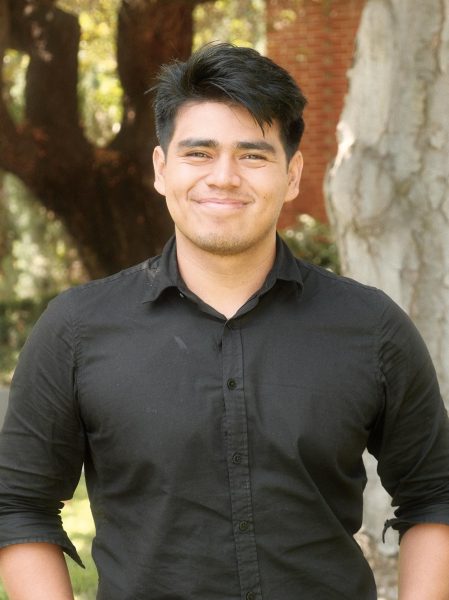In Fall 2024, Biola University implemented Turnitin for its Canvas courses. Since its transition to Canvas in 2014, Biola used an author-detection system called SafeAssign. The Turnitin feature on Canvas is disabled by default and has to be enabled by faculty for the specific assignment. When Turnitin is applied, students are redirected to the Turnitin website for submission.
Biola’s decision to subscribe to Turnitin has stirred questions from students and faculty alike. Matthew Weathers who serves in Biola’s digital learning and program development, explained that the choice was driven by Turnitin’s widespread use among universities.
“We chose Turnitin because it’s one of the largest systems available, used by thousands of other schools. Also, it integrates with Canvas and teachers can easily add it to their Canvas assignments,” Weathers said.
Turnitin does not disclose its institutional license costs on its website. According to 97unique, the annual cost was $3 per student in 2021. If this pricing remains the same, Biola’s subscription for 5,300 students would total around $15,900. The Information Technology (IT) department was contacted about the subscription fee but gave no response.
Given the estimated pricing and technical features, the question remains: is it worth it in improving academic integrity?
WHY AI-CHECKER AT ALL?
Turnitin is part of Biola’s effort to prevent plagiarism and the safeguarding of intellectual honesty. Weathers said, “We use it to discourage plagiarism and promote academic integrity.” Does that mean there was an issue with academic integrity prior to the subscription?
“Yes,” Weathers admitted, “There has always been a small number of students who try to cheat on assignments and tests.” When students see that they need to submit their assignments through Turnitin, it discourages and catches blatant attempts of copy-pasting AI-generated answers.
ACADEMIC INTEGRITY?
Biola’s statement on using generative AI is mostly still decided by professors, giving reign to each professor for its permission or prohibition. David Bourgeois, director of Artificial Intelligence Lab and assistant provost for program development mentioned that the detailed wording of policy for generative AI depends on the schools and professors, with Biola’s Handbook on Academic Integrity as the foundation. “it can be anything from ‘don’t use it, and if you do, it’ll be considered cheating,’ to ‘use it all you want, I don’t care which,’ I don’t know if anyone actually has that [second] one, but mine’s close to that,” Bourgeois said.
The Academic Integrity Handbook also emphasizes the citing/acknowledgment of such tools when used despite its permission, “Even if the use of generative artificial intelligence such as ChatGPT, Elicit, or other text, graphic, video, or audio generators is expressly allowed by your instructor, using this technology without acknowledgment, citation, or attribution is plagiarism.”
On the backend, faculty will see a “similarity score” percentage rating to the paper submitted. A “similarity score” measures the percentage of a submission that matches documents in the Turnitin database.
“So it’ll say this paper is 22% [similarity score], this one is 52%. What I would always do as a faculty is anything under a certain threshold, I would just figure that was kind of random, or they were quoting something. You can set it to ignore things that are quoted,” Bourgeois continued, “I would always dig in. If it gave a percentage more than, say, 10 or 15% I go in, and you would see the document with different colored highlights, which meant these [sentences] are plagiarized. And for each one, it would reference where was this copy from.”
PRIVACY CONCERNS
Privacy is a common, inevitable issue when an external system that acquires a high amount of data is in place. Weathers addresses the concerns saying that “Turnitin takes student privacy seriously. They never release student info to people outside of Biola, and even at Biola, only the student’s teacher(s) and TAs can view the ‘similarity score.’”
Bourgeois explained, “When you submit something to Turnitin, it can keep it right in its database and use it to compare it to other schools. And there’s a setting in Turnitin where you can tell it [to] keep the documents in my database or not.” The default setting for Turnitin is to keep students’ submissions to make sure they don’t submit the same paper, someone else’s, past or their sibling’s paper. However the faculty can also turn off submission to their repository, and for that, it will check the paper but not retain it.
FACULTY RESPONDS
Turnitin has sparked mixed reactions among faculty, while some use it and see it as a positive safeguard, some are cautious to use it to gauge students’ originality.
Christine Watson, an English professor expressed, “I chose not to use it because I check work in progress, and I have ways of understanding how students have worked through their process. I also just feel like Turnitin may send a message that I expect there to be cheating, but my experience is that most students don’t. I have concerns and questions about Turnitin as it is used in higher education. I’m personally a bit reluctant to ask students to submit their intellectual property to a bank of data that uses this property to compare to others’ and then asks students to pay for it.”
Bethany Williamson, also an English professor said, “I see Turnitin as an accountability tool that should be used with discernment and care, never as a substitute for a professor’s own careful reading of and feedback on student work.”
Bourgeois sends a message to faculty warning them of some nuances related to Turnintin, “My word to faculty right now is, be very, very careful about using Turnitin to catch AI in general because even catching it for plagiarism, just because something’s marked as plagiarized doesn’t mean that it actually is. And to me, the worst thing we can do is penalize a student for something when they didn’t do anything wrong.”
ONGOING RESEARCH
So, how effective is Turnitin in curbing plagiarism?
The AI Lab has ongoing research testing the effectiveness of Turnitin. Though the research has not concluded, it acknowledges two points, “We did find that Turnitin does a really good job of capturing anything that’s fully written by AI. But then, and this is where we haven’t finished our testing, is there is this gray area, let’s say I create a document. I wrote it myself and then asked AI to help me with grammar, spelling. The first question I would have is, ‘Is that cheating?’ The second question is, ‘What would turn it into [cheating]?’ And we just got very mixed results.”
Gabriel Anderson, a senior in computer science is spearheading this research. One of his findings is that Turnitin is more accurate than he initially thought. He also shared whether the implementation of Turnitin is needed.
“I think that Turnitin is something that the school should be using because at least it is a major deterrent, regardless of its capabilities. When students know that you are at least looking for it, they are a lot less likely to even consider using AI. [For students] if you’re at all confused about what you can or can’t use AI for, ask your professor.”
He continued, “Turnitin is considered the one that has the least number of false positives and least number of false negatives as a whole. These numbers change all the time and how accurate depends often on what version of AI is being used, but generally Turnitin is considered the most reliable.”
WHAT’S NEXT?
With this ever-moving target of innovation where academia is creating ways to increase academic accountability, it is incumbent to respond to the time and its unique needs. Weathers said, “We plan to keep using Turnitin until academic integrity is no longer an issue, or when another system becomes better and/or cheaper. Long-term, we plan to use Turnitin for AI detection, which is already built into the current system. We anticipate this will be a growing issue.”
While Turnitin might not be the final answer, for now, it remains valuable for Biola in its effort to uphold academic integrity.







